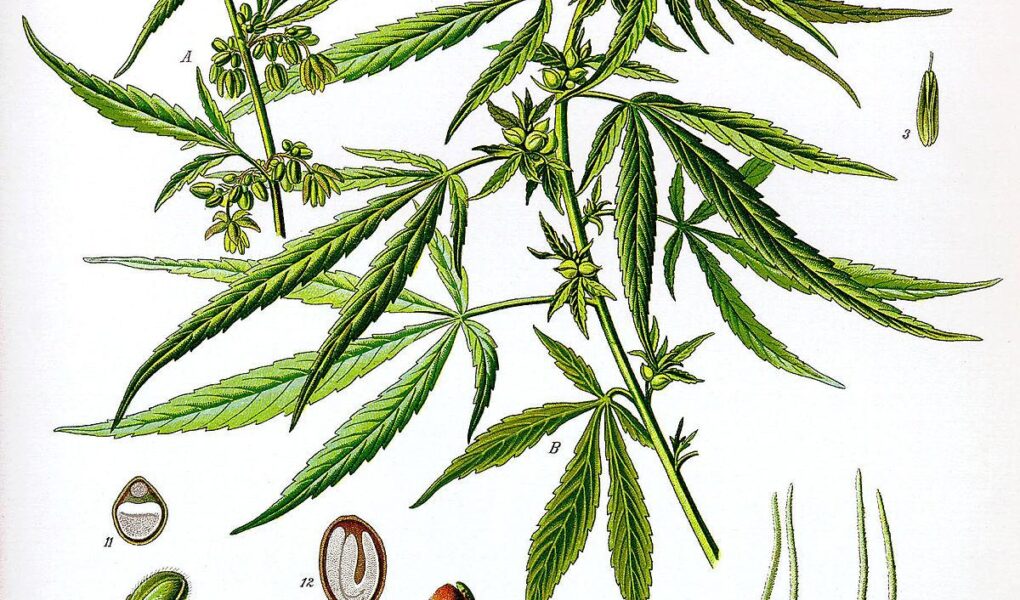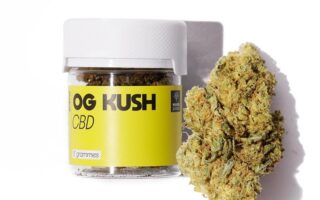Understanding the Drug Classification of Marijuana: A Comprehensive Overview
As the debate over marijuana continues to intensify across the globe, the classification of this multifaceted plant has become a focal point of legal, social, and scientific discussions. With its complex array of compounds known as cannabinoids, marijuana elicits a spectrum of effects, ranging from therapeutic benefits to recreation. Yet, its standing within the legal framework remains a point of contention, influenced by historical perceptions and evolving research. This article seeks to unravel the intricacies of marijuana’s classification, exploring the categories it falls under, the criteria that define these classifications, and the implications for policy, healthcare, and society at large. Join us on a journey through the layered landscape of marijuana, where the lines between medicine and recreation blur, and understanding is key to informed dialogue.
Table of Contents
- Understanding the Spectrum of Marijuana: From Medicinal Use to Recreational Impact
- The Role of Cannabinoids: Exploring THC and CBD in Therapeutic Applications
- Legal Frameworks and Classification: Navigating the Regulatory Landscape of Marijuana
- Recommendations for Safe Use: Guidelines for Patients and Recreational Users
- Q&A
- In Conclusion
Understanding the Spectrum of Marijuana: From Medicinal Use to Recreational Impact
Marijuana is a complex plant that has long been categorized based on its diverse properties and effects. At one end of the spectrum, we have medicinal marijuana, which is used to alleviate symptoms of various medical conditions. Patients may benefit from its components, primarily THC (tetrahydrocannabinol) and CBD (cannabidiol), which interact with the body’s endocannabinoid system to produce therapeutic effects. This includes alleviating pain, reducing inflammation, and enhancing appetite, among other benefits. Some common medical conditions treated include:
- Chronic pain
- Seizure disorders
- Multiple sclerosis
- Anxiety and depression
On the other side, marijuana’s recreational use has gained significant traction, especially as more regions legalize it. Recreational users often seek the euphoric highs associated with THC, leading to various social and cultural phenomena. While it can offer moments of relaxation and enhanced creativity, there are also associated risks, particularly for young adults and those with predisposed mental health issues. Considerations for recreational usage include:
| Pros | Cons |
|---|---|
| Social enjoyment | Potential dependency |
| Stress relief | Impaired judgment |
| Increased creativity | Negative health effects |
The Role of Cannabinoids: Exploring THC and CBD in Therapeutic Applications
Cannabinoids have captured significant attention in recent therapeutic discussions, primarily due to their potential in addressing a myriad of health issues. Among the over 100 known cannabinoids, THC (Tetrahydrocannabinol) and CBD (Cannabidiol) stand out for their distinct effects and applications in treatment. While THC is renowned for its psychoactive properties, contributing to the sensation of being ‘high’, it also plays a critical role in pain relief, appetite stimulation, and nausea reduction, particularly for patients undergoing chemotherapy. Conversely, CBD is celebrated for its therapeutic potential without the intoxicating effects, making it an appealing option for many patients. It may assist in anxiety management, inflammation reduction, and seizure control, leading to its rising popularity in wellness products.
The therapeutic applications of THC and CBD are not only varied but also continuously evolving as research progresses. Below are some key distinctions between the two cannabinoids in therapeutic contexts:
| Aspect | THC | CBD |
|---|---|---|
| Psychoactivity | Yes | No |
| Common Uses | Pain relief, nausea treatment | Anxiety relief, inflammation reduction |
| Legal Status | Varies by region | Generally more accepted |
As these cannabinoids continue to be studied, they offer promising avenues for future therapeutic exploration, paving the way for innovative treatments for various medical conditions. Both THC and CBD demonstrate the intricate balance between utility and regulation in the evolving landscape of medical marijuana, affirming their roles not only as natural remedies but also as subjects of scientific inquiry.
Legal Frameworks and Classification: Navigating the Regulatory Landscape of Marijuana
Understanding the legal frameworks surrounding marijuana requires a deep dive into a complex interplay of state and federal regulations. In many countries, marijuana is classified under various schedules, with implications for its legality, medical use, and potential research avenues. It’s essential to recognize that marijuana legislation can vary significantly, encompassing both recreational and medicinal classifications. In the United States, for instance, individual states have enacted their own laws, leading to a patchwork of regulations that can be confusing for consumers and businesses alike. This variation underscores the importance of staying informed about both local and federal regulations, especially as movements toward legalization continue to gain momentum.
When considering marijuana’s classification, the regulatory landscape also incorporates factors such as potency, intended use, and distribution methods. The classifications can influence a range of areas, including taxation, criminal justice implications, and public health policies. Here are some key factors affecting marijuana’s classification:
- Substance Schedule: Whether classified as a Schedule I, II, or other category affects legal status.
- State vs. Federal Law: Discrepancies can create legal uncertainties for users and dispensaries.
- Medical vs. Recreational Use: Different regulations apply based on the intended use of marijuana.
- International Treaties: Various global treaties can impact local legalization efforts.
| Classification | Examples | Legal Status |
|---|---|---|
| Medical Marijuana | CBD oils, THC capsules | Legal with a prescription in many states |
| Recreational Marijuana | Flower, edibles | Legal in several states for adult use |
| Illegal Use | Unauthorized distribution, use | Prohibited in most jurisdictions |
Recommendations for Safe Use: Guidelines for Patients and Recreational Users
When using marijuana, whether for medicinal or recreational purposes, it’s essential to adhere to certain guidelines to ensure a safe experience. First and foremost, always consult a healthcare professional before starting any marijuana regimen, especially if you have pre-existing health conditions or are on other medications. Keeping track of dosage is equally important; start with a low dose and gradually increase as you become familiar with how marijuana affects you. It’s also advisable to avoid mixing marijuana with other substances, including alcohol, as this can exacerbate adverse effects.
find a comfortable and safe environment to use marijuana, particularly for recreational users. Ensure the space is free from potential hazards and shared responsibly among acquaintances. Always consider the legal implications in your area regarding marijuana use, as laws vary widely. If you are a recreational user, ensure that you are consuming from reputable sources to avoid contaminants, and remember to stay hydrated and take breaks as needed to maintain your well-being.
Q&A
Q&A: Understanding the Drug Classification of Marijuana
Q1: What is drug classification and why is it important?
A1: Drug classification refers to the categorization of substances based on their effects, potential for abuse, and medicinal value. This process is crucial for public health and safety, guiding regulations, research, and treatment options for substance use. It helps determine legal frameworks and informs individuals about the risks and benefits of various drugs.
Q2: Where does marijuana fit into drug classification systems?
A2: Marijuana is primarily classified as a Schedule I substance under the Controlled Substances Act in the United States. This designation suggests it has a high potential for abuse, no accepted medical use, and a lack of accepted safety for use under medical supervision. However, this classification is a topic of ongoing debate, especially with growing evidence of its therapeutic benefits.
Q3: What criteria are used to determine a drug’s schedule?
A3: Several factors influence a drug’s schedule, including its potential for abuse, accepted medical uses, and safety profile. For example, Schedule I drugs are considered the most dangerous, while Schedule II drugs (like morphine) have high abuse potential but accepted medical uses. The criteria aim to balance the risks of addiction and health impacts with the therapeutic benefits of a drug.
Q4: Are there any medical uses for marijuana recognized by the government?
A4: While marijuana remains classified as Schedule I, certain components of it, particularly cannabidiol (CBD), have gained recognition for their medical uses. The FDA has approved Epidiolex, a CBD-based drug for treating specific types of epilepsy. This indicates a shift towards understanding marijuana’s potential, even if the plant itself remains heavily restricted.
Q5: How do different countries classify marijuana?
A5: Internationally, the classification of marijuana varies widely. Some countries have decriminalized or legalized recreational and medical use, while others maintain strict prohibition. The United Nations’ Single Convention on Narcotic Drugs categorizes marijuana similarly to Schedule I substances, but changing attitudes and policies in various regions continue to reshape its legal landscape.
Q6: What are the implications of marijuana’s classification on research?
A6: The Schedule I classification poses significant barriers to research on marijuana, as it requires cumbersome regulatory processes. Researchers face hurdles in obtaining funding and conducting studies due to the stigma and restrictions tied to its legal status. However, as more states legalize its use and public interest grows, opportunities for research are beginning to expand.
Q7: What is the future of marijuana classification?
A7: The future of marijuana classification is uncertain, but trends suggest potential reform. As societal views shift and research uncovers more about the plant’s benefits and risks, discussions about reclassifying marijuana or removing it from the Schedule I list are likely to intensify. Advocacy, public opinion, and legislative changes will play pivotal roles in shaping the future landscape of marijuana classification.
Q8: How can individuals stay informed about marijuana classification and its implications?
A8: Staying informed requires engaging with reliable sources, such as governmental health agencies, credible research institutions, and educational programs. Participating in discussions, attending community forums, and exploring literature on drug policy can also provide insights into the evolving conversation around marijuana classification and its broader implications.
—
Feel free to use this Q&A as a framework to enrich your article on the drug classification of marijuana!
In Conclusion
the drug classification of marijuana serves as a complex tapestry woven from threads of science, policy, and cultural perception. As we navigate the shifting landscape of legalization and medicinal use, understanding the nuances of marijuana’s classification becomes increasingly important. This multifaceted plant, once relegated to the shadows of stigma, is now stepping into the light of discussion and research. Continued dialogue and investigation into its properties, effects, and societal implications will shape not only how we classify marijuana, but also how we approach public health, law, and personal freedom in the years to come. As we turn the page on this chapter, let us remain informed and open-minded, ready to engage with the evolving narrative of cannabis in our world.



